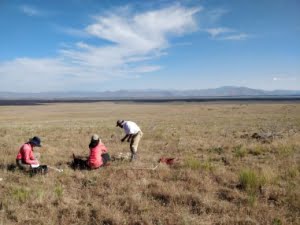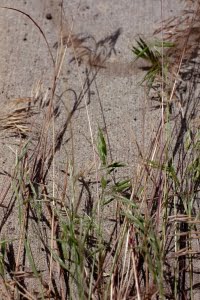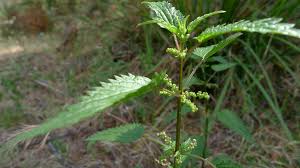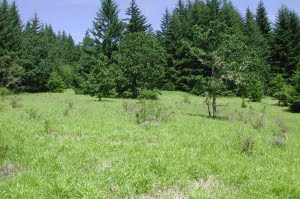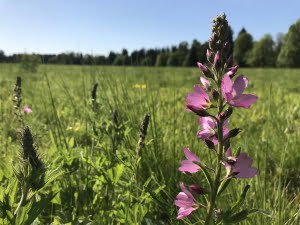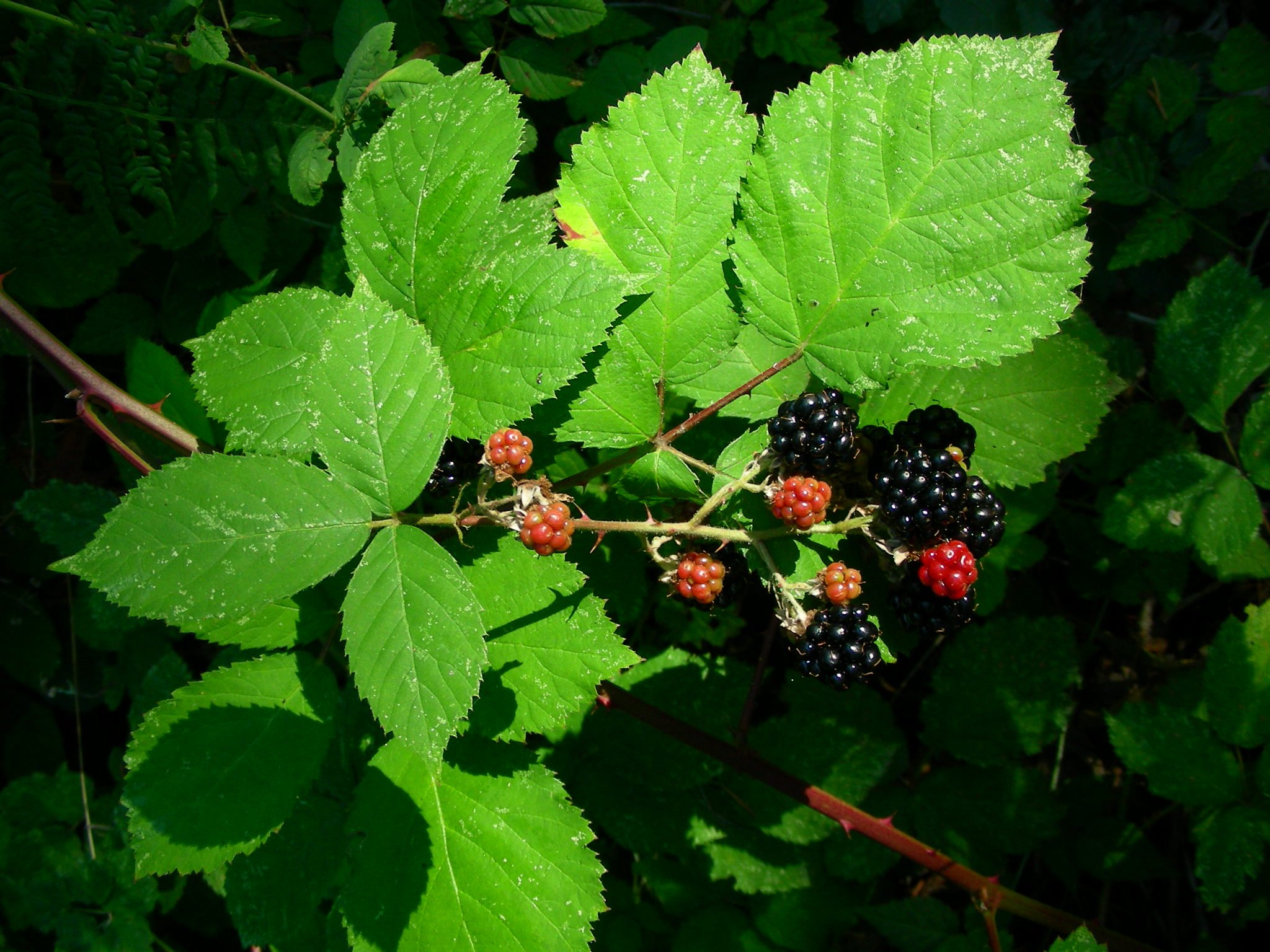
Bring them to the table: What you can do to fight non-native plant invasions
By Michel Wiman
July 2020
It’s late summer and I’m clearing an infestation of Himalayan blackberry (Rubus armeniacus) that reaches over my five-and-a-half-foot frame, with its thorny spikes easily piercing through my double-layer pants. As my hands get scratched through my gloves, all I can think is that no animal would want to be anywhere near this plant. At Institute for Applied Ecology (IAE), we've been battling invasive plants for over 20 years. Each year our Northwest office manages invasive blackberry, Scotch broom, various thistles, tansy ragwort, false brome, Japanese knotweed, stinging nettle, among others. Our Southwest office wrangles with Russian olive, Siberian elm, hounds tongue, bull thistle, bindweed, Johnsongrass, and the list goes on. Land managers dealing with these infestations see some success, but also resurgence, regrowth, and emergence of new invaders. We must be continually vigilant. So, we focus on critical areas, and read on... even have a little fun with our invasive pests.
What’s the buzz about invasive plants?
We define invasive species as having two main characteristics: they are not indigenous or native to the ecosystem they occupy, and they cause harm to human, environmental or economic health. Though we know it’s a moving target, invasive plants, animals, and diseases have been estimated to cost the U.S. more than $120 billion each year. In Oregon, Himalayan blackberry can cost anywhere from $250-$1000 per acre to control. Invasive plants lack their natural controls in a non-native ecosystem, and often they have traits such as fast growth, high seeding or reproductive rates, ability to restrict competitors’ growth, and/or the ability to adapt and thrive in a wide ecological niche. These aggressive species take a huge toll on native sensitive and rare species like Taylor’s checkerspot and Fender’s blue butterfly, Willamette daisy and Kincaid’s lupine, Mazama pocket gopher and greater sage grouse. Then there are immeasurable costs these invasive monocultures can have on displacing the food and reproductive needs of our insect pollinators.
When invasive plants are deemed exceedingly toxic, poisonous, and obnoxious to humans and/or livestock, they must be controlled if found on public or private lands. For invasive plants, 46 states have Noxious Weed Lists of weedy and invasive plants that may require private control; agencies such as the U.S. Forest Service and Bureau of Land Management enforce control requirements on public lands. The U.S. Fish and Wildlife Service is the agency responsible for control of vertebrate animal pests. IAE partners with these agencies to restore weed-infested natural areas and conserve critically threatened habitats and native species.
Restoring priority habitats
Are all invasive plants bad? The short answer is no. As I write this, a tiger swallowtail outside my window gathers nectar from a rogue bull thistle (Cirsium vulgare) in an area I have been neglecting to mow. We know we can’t control all invaders; in fact, some species were introduced to the U.S. so long ago or have spread so extensively that they are called 'naturalized' – like my yard's bull thistle, cheatgrass (Bromus tectorum) or English ivy (Hedera helix). There is no economically feasible way to control these large-scale, naturalized invasions, so what becomes critical is to manage and restore high priority areas that can sustain wildlife and pollinators. Some flowering invasive plants, blackberry and bull thistle for example, may even provide resources for pollinators and wildlife. Part of IAE's mission is to conserve and restore critical populations of native plants and habitats to sustain our most threatened pollinators and wildlife.
What can you do
Learn which plants are invasive in your area. Wherever you go, there will be a weed guide available online or at the local County Extension office. IAE publishes three guides for the state of Oregon, available for a nominal fee on our store. Once you have your invasive plant search-images in your mind, you can help control by hand-pulling noxious weeds on trails. If you own land or a farm, it is well known that the easiest and most effective to control weeds is at the seedling stage or before flowering. The time before the plant flowers is also the most challenging time to identify them, but seedling guides can be found online.

Plant natives in your own backyard. You’d be surprised how many native pollinators will find and take respite there. Plant as many flowering native forbs and shrubs as you can, choosing red and pink flowers such as wild currants or native checkermallows (Sidalcea species). Grow out sections of your lawn and quit using pesticides. Be suspicious of wildflower or seed mixes, they sometimes contain those really fast-growing and aggressive non-native pest plants!
And now for the fun part...
Once you’ve identified them, you can really take a bite out of many invasives: Harvest those delicious blackberries and eat them, sharing with your friends to raise awareness. IAE publishes They’re Cooked, an invasive species cookbook that has recipes for how to make invasive plant and animal dishes, such as Japanese knotweed quick bread and popcorn starling. There are even recipes for those who wish to harvest and eat nutria, an invasive rodent, or purple varnish clams. Please follow our guidelines to make sure you cook invasive plants and animals fully, and harvest according to your local Department of Fish and Game regulations. IAE's annual fundraiser dinner, the Invasive Species Cook-off, is a lovely event featuring an invasive species-themed dinner that literally brings invasive species to the table to raise awareness in a fun way.
And you can partner in our efforts! We’re doing a virtual membership campaign around invasive species in 2020, and we ask you help out by joining as a member of IAE in lieu of attending the event. We will be posting to our social media channels all August about our work.
Thank you for being our co-conspirator in the fight against invasive plants!
Restoration
Research
Education
Get Involved
Contact
Main Office:
4950 SW Hout Street
Corvallis, OR 97333-9598
541-753-3099
info@appliedeco.org
Southwest Office:
1202 Parkway Dr. Suite B
Santa Fe, NM 87507
(505) 490-4910
swprogram@appliedeco.org
© 2025 Institute for Applied Ecology | Privacy Policy

